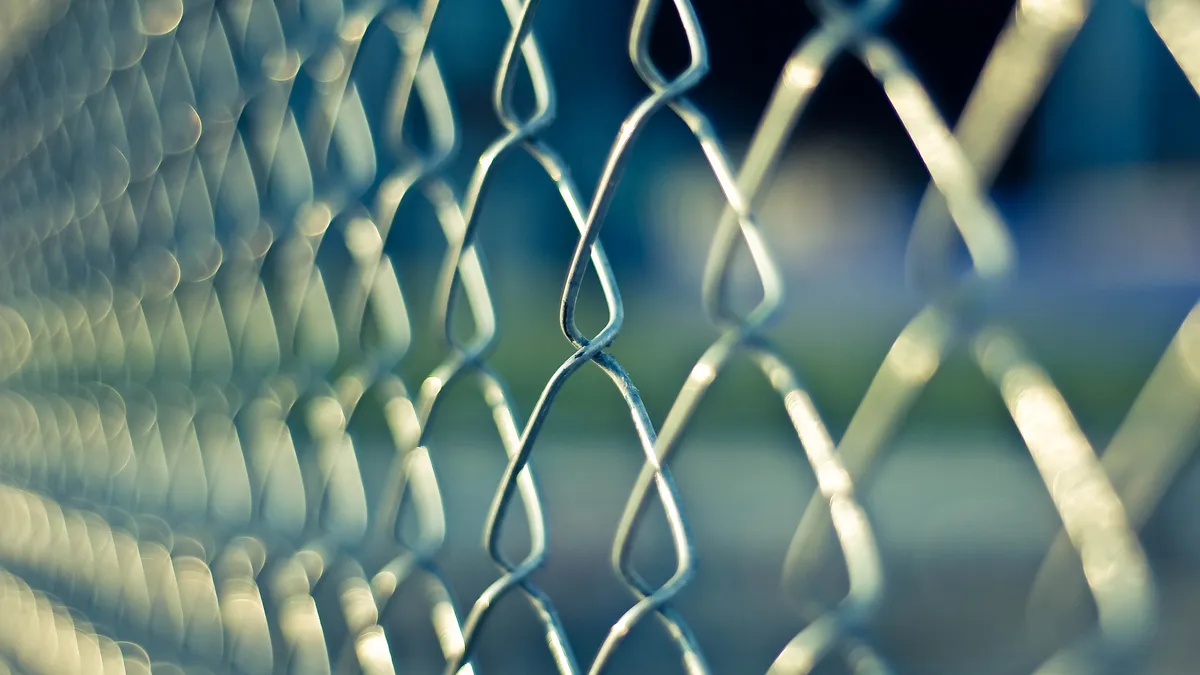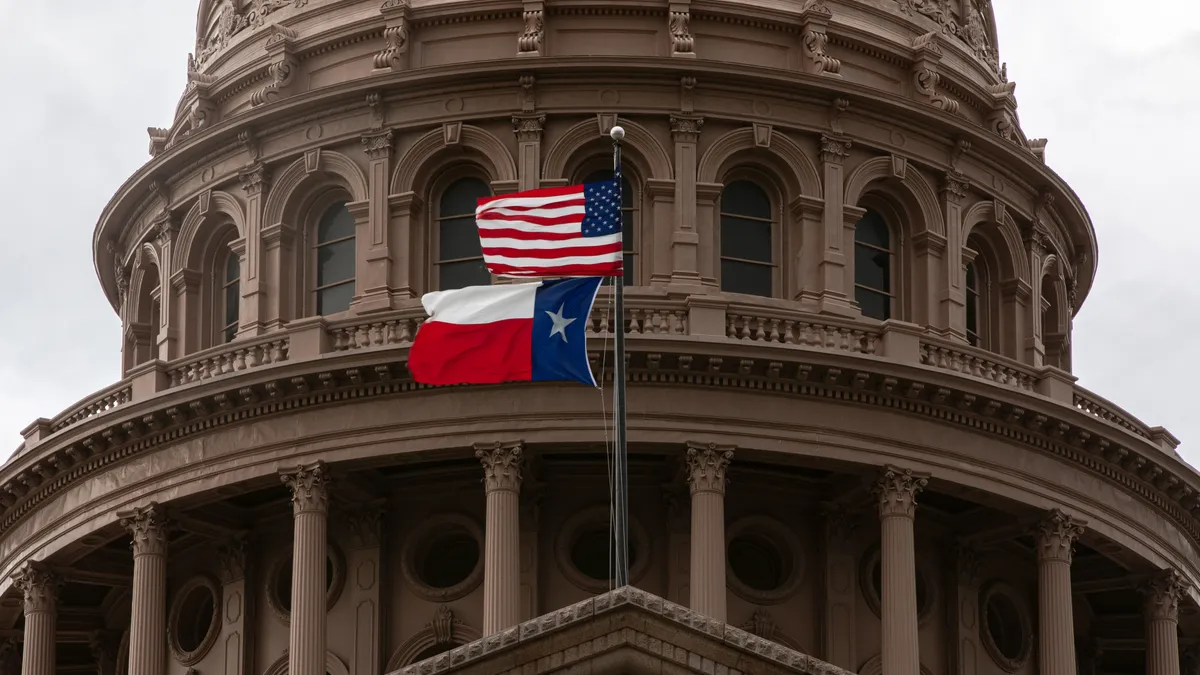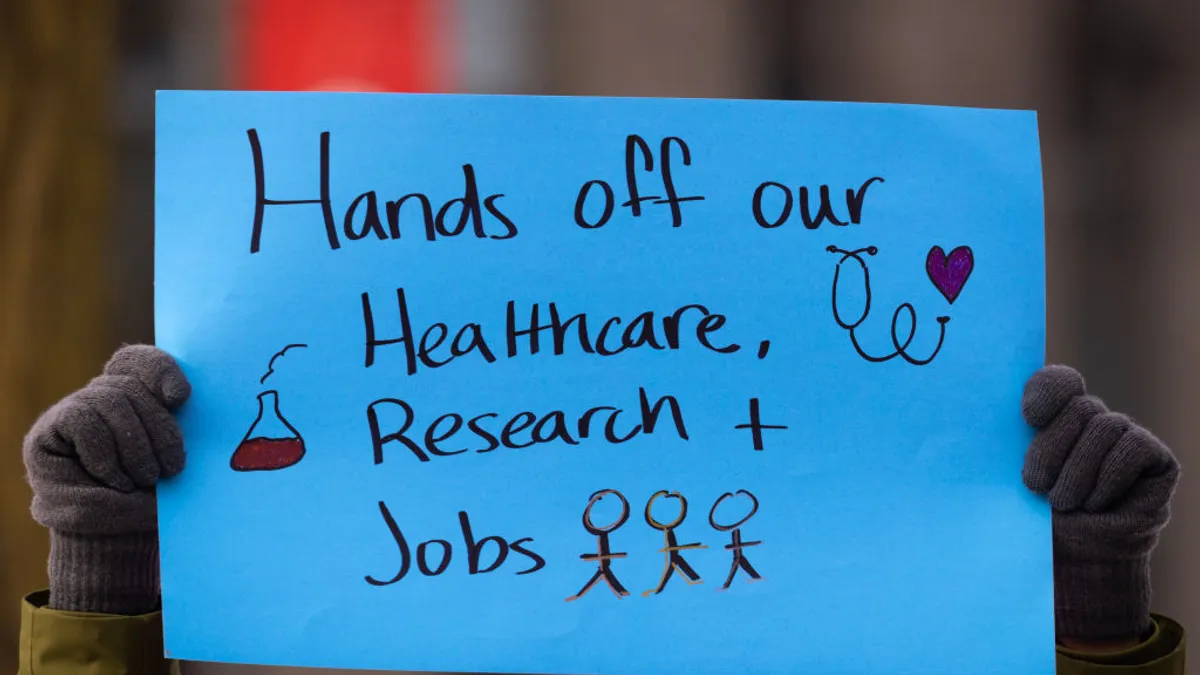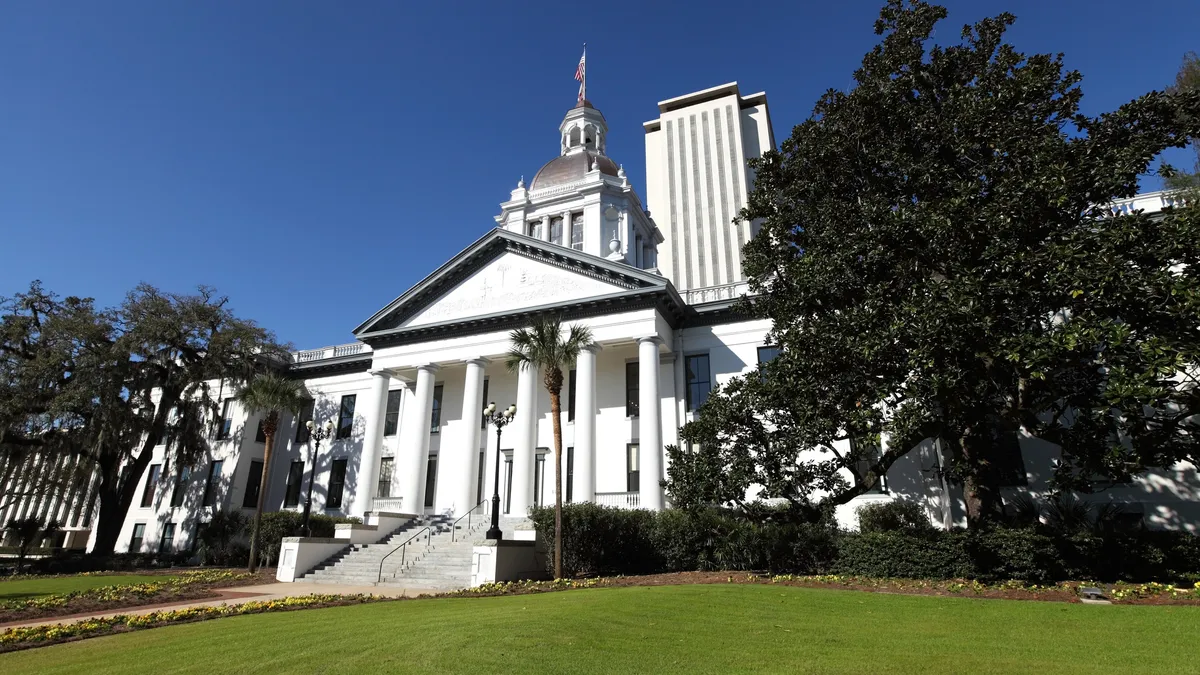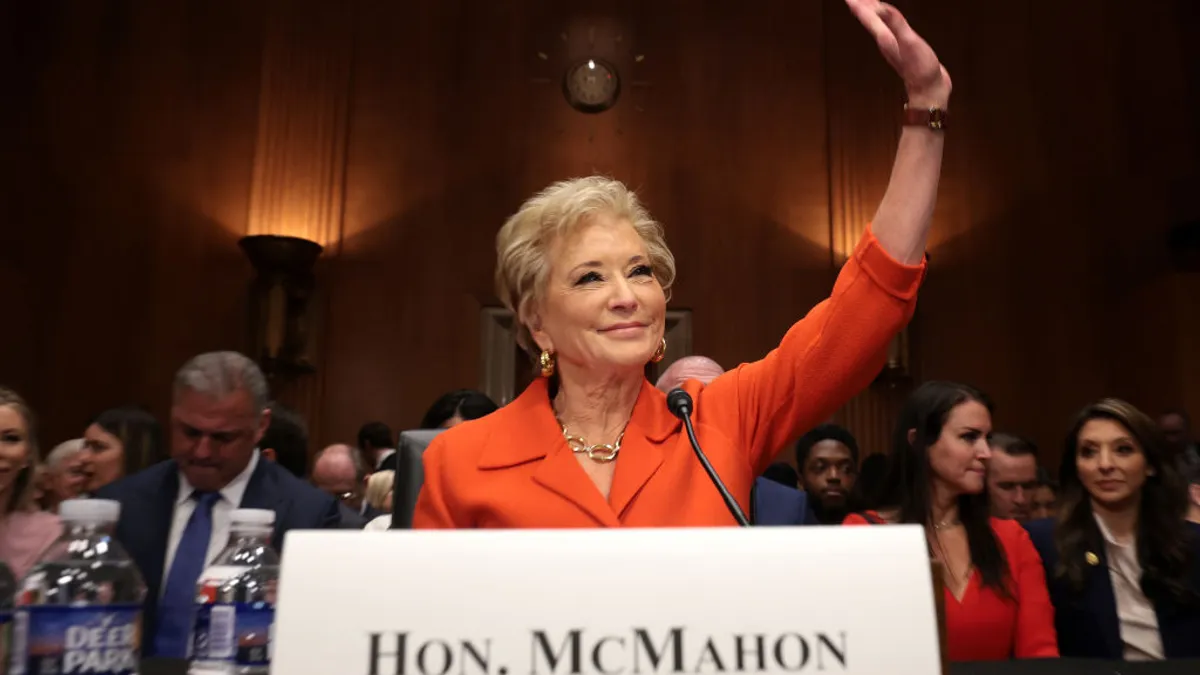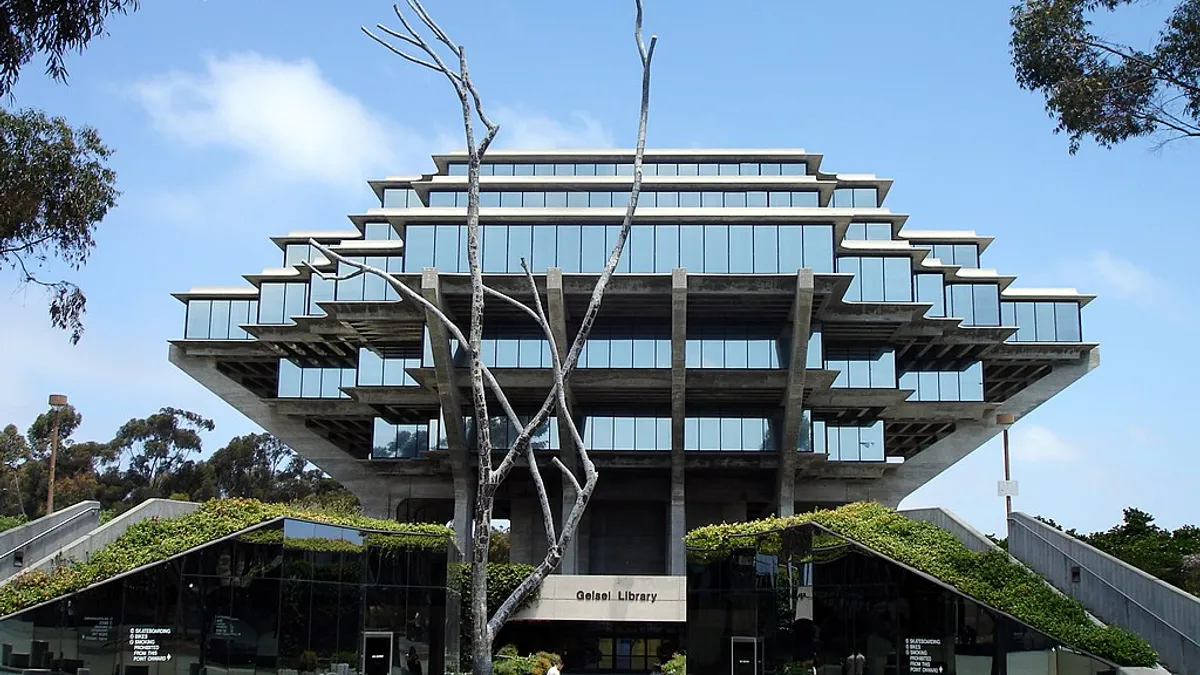During his fourth year inside Fulton County, Georgia's correctional system, Larry Jackson became the subject of an experiment in prison education.
The facility needed more medical help, so it started training its incarcerated population. He earned a nursing assistant certification for free and worked primarily as an orderly for the system. But the program was eventually disbanded. By the time Jackson, who entered the system at age 23, was released in 2016, at age 38, his credential had expired, giving him almost nothing to show for his work.
Now, a bipartisan group of advocates hopes people in Jackson's situation will benefit from a provision tucked into the 5,600-page federal spending bill Congress passed late last year. It lifted a 26-year-old ban that blocked people who are incarcerated from receiving Pell Grants, federal aid for undergraduates with high financial need. While few people who are incarcerated have college credentials, many have indicated they want to grow their education while behind bars. The expansion builds on Second Chance Pell, a pilot program that gave financial aid to about 17,000 incarcerated students from 2016 to 2019.
"If I had access to that, I could have gotten a degree that didn't expire," Jackson said.
Proponents of the change, which goes into effect by mid-2023, hope it will enable more people to access higher education while incarcerated. But they note that its implementation presents a variety of challenges, which include addressing limitations that kept the pilot narrow and avoiding the abuse of federal dollars by seeking more transparency.
From tough-on-crime to Second Chance Pell
The sweeping 1994 crime bill banned incarcerated people from obtaining Pell Grants. In 2015, the Obama administration launched the Second Chance Pell program, which former U.S. Secretary of Education Betsy DeVos expanded last spring.
Students earned more than 4,500 degrees and certificates through the program as of 2019, said Margaret diZerega, the director of the Vera Institute of Justice's Center on Sentencing and Corrections. The 2020 expansion more than doubled the number of participating colleges to 130 schools across 42 states and the District of Columbia. The latest legislation significantly expands its scope. The Vera Institute has estimated that nearly half a million incarcerated people would be eligible for Pell Grants if the ban was lifted.
While that's only about a fifth of the U.S. incarcerated population, advocates hope the change will give Second Chance Pell staying power.
The legislative expansion was a relief to Chris Agans, a Rutgers University employee who oversees the administration of New Jersey Scholarship and Transformative Education in Prisons (NJ-STEP), an association of New Jersey higher education institutions that help incarcerated people access college classes.
Through NJ-STEP, students earn degrees from Rutgers or Raritan Valley Community College, which are among the department's experimental sites for Second Chance Pell. Other universities contribute courses or faculty. NJ-STEP was founded in 2012 and initially used private and university funding to help people in prison afford and access education. Since then, Agans said, more than 250 students have earned associate degrees and 48 have earned bachelor's while incarcerated. More than 100 earned a bachelor's after their release and 16 went on to earn a master's degree.
"The permanency of Second Chance Pell is a tremendous boon to existing programs who have been living in this year-to-year attempt at creating budgets," he said, noting that it can allow for investments in infrastructure that could make these programs feel more connected to their schools.
The first step for Andrea Cantora, a professor at the University of Baltimore's School of Criminal Justice, will be to tell the roughly 100 applicants who her school's program has rejected that they might now be eligible.
U of Baltimore's Second Chance College Program lets students at a Maryland prison study toward a Bachelor of Arts in Human Services Administration. The program has served 96 students since 2016; 48 are enrolled this semester. None have graduated yet, though Cantora expects a large group to do so in 2023. Some were transferred to other facilities, which meant they could no longer participate.
"If there's a huge increase in participants, we're going to have to talk about expanding our program to serve more students — which means we'll need more staff and more space," she said.
'Running a college in someone else's house'
Even with more federal support, there are significant hurdles to increasing college access among incarcerated students. Some of these were pointed out in a 2019 Congressional report evaluating a potential expansion, which also bemoaned the "little research on the best way to deliver postsecondary education in prisons."
For one, only about two-thirds of incarcerated people have a high school diploma or its equivalent, the Vera Institute notes, a prerequisite for college classes. Even then, correctional systems and facilities may have additional rules. In New Jersey, for instance, students in solitary confinement can't participate, Agans said.
Other factors that could disqualify potential students include having previously defaulted on student loans and being unable to gather the necessary documentation to apply for financial aid.
The correctional facilities themselves are often a barrier. "Pretty much every room in the prison is the wrong space," Agans said. "They're built for security."
Modern colleges assume students can be self-directed — logging into their school emails, connecting with advisers, and mastering the library and assignment submissions systems. In prison, Agans said, students often can only use notepads, and getting their work into the school's computer system can take hours and introduce human error.
Cantora's program was addressing this issue before the expansion. The U of Baltimore spent about $30,000 to buy laptops for its incarcerated students, and it is teaching them keyboarding and other tech skills.
A prison's constraints can inhibit face-to-face instruction, too. Instructors need clearance before they can meet with students, and it can take a while to get past the front gate.
"You're running a college in someone else's house," Agans said.
The future of Second Chance Pell
The legislative expansion makes changes advocates hope will increase the share of incarcerated people who earn a postsecondary credential while in prison, which was only about 9% according to recent data.
For instance, the law ends the pilot program's policy limiting participation to those eligible for release, particularly those likely to be released within five years of starting their courses. Instead, all people in local, state and federal correctional institutions are eligible if they demonstrate the required level of financial need to qualify for a Pell Grant, regardless of their conviction.
That's a big reason why the U of Baltimore's program rejected so many applicants, Cantora said. She's cautiously optimistic. "It was a nice surprise that no one's being eliminated or excluded," she said.
The new legislation also requires that credits earned in the prison program be transferable to at least one institution in the state where the facility is based or where most individuals will live after they are released.
But shifting much of the programs' oversight from the federal government to the states means accessibility will vary. Agans hopes the federal government will continue to provide oversight that ensures students get the highest quality programming. Participating schools will be required to report to the Education Department annually about students' progress while incarcerated and after their release, as well as incarcerated individuals' ability to apply for financial aid and their access to career services.
Even the federally run pilots were not immune from quality concerns, however. The Second Chance program at Ashland University, in Ohio, recently caught flak for rapid expansion and allegations its programs are of poor quality.
"The permanency of Second Chance Pell is a tremendous boon to existing programs who have been living in this year-to-year attempt at creating budgets."

Chris Agans
Director, NJ-STEP
Colleges that want to tap this expanded market need to be ready to commit. Prison education programs often start because a few faculty members are interested in expanding access — but they alone can't provide a full college experience. "We encourage colleges … to make sure they have those other pieces of the college working with them," diZerega said.
And Pell dollars often don't cover all of a colleges' costs, making such work dependent on administrators' being willing to invest. For example, Cantora runs her school's program on top of her faculty duties, with help from a graduate student and a Federal Work-Study recipient. The latter is an alum of the university's Second Chance program who is enrolled on campus. "A lot of programs might have to hire an administrator," she said. "Pell doesn't really cover that."
Agans said running these programs can get expensive, and he keeps his budget in line by keeping costs down and recycling materials. Some programs, he said, have figured out how to make money by compromising quality, using distance learning or relying on volunteers. But, he added, "it seems the overwhelming majority of directors I talk to are in the hole."
DiZerega hopes the expansion will lead to more options for what topics students can study, as schools typically only offer a few programs to incarcerated students. "Once there are more colleges teaching, hopefully students will have more choice," diZerega said.
After Jackson's release, he had trouble finding a job because of his history. He got a better credential from a technical college. Now, he works as a medical lab instructional aide and technician in Georgia.
Jackson hopes colleges can learn from experiences like his to ensure the stigma associated with having a criminal record doesn't cancel out the value of credentials earned while incarcerated.
"There has to be a connection between the community and the school administrators," he said.


